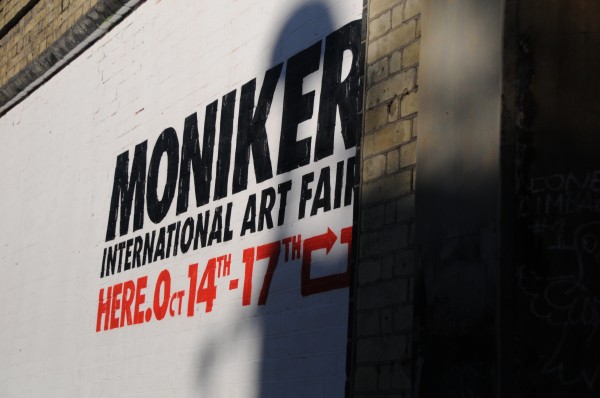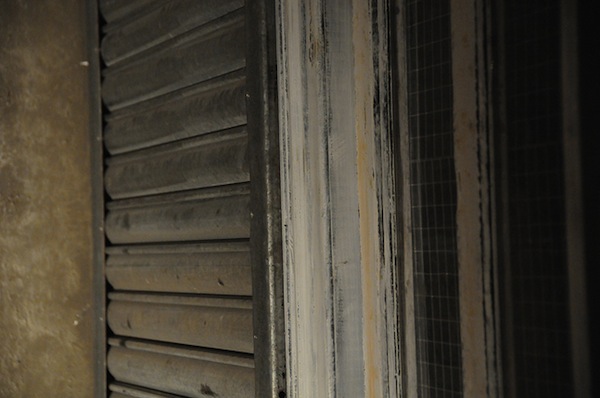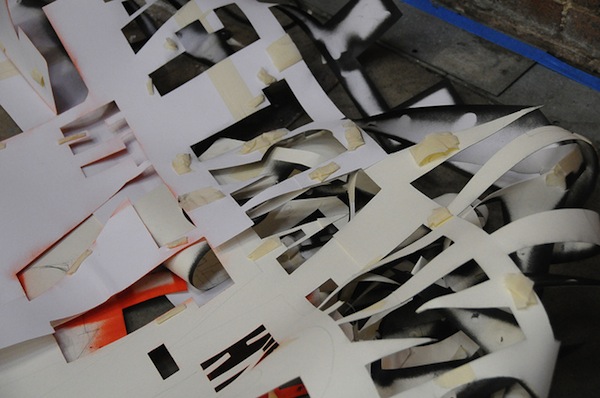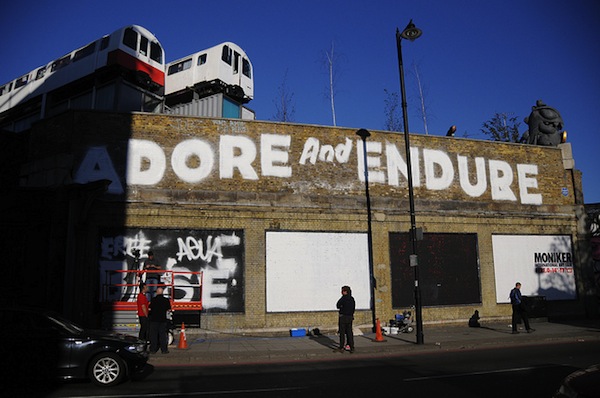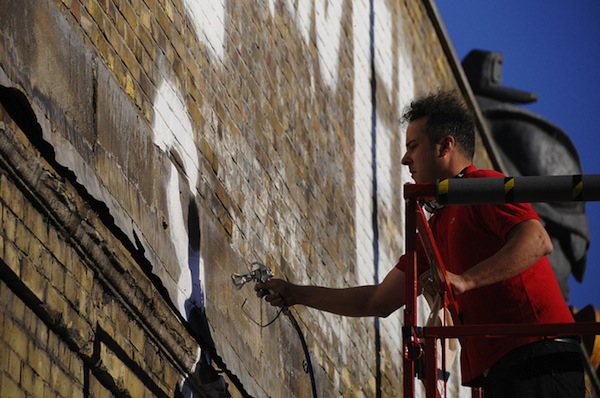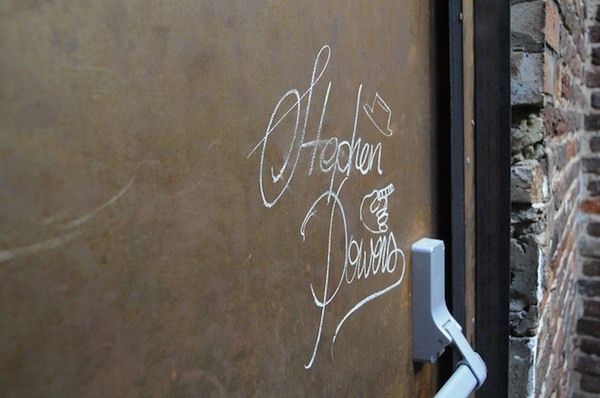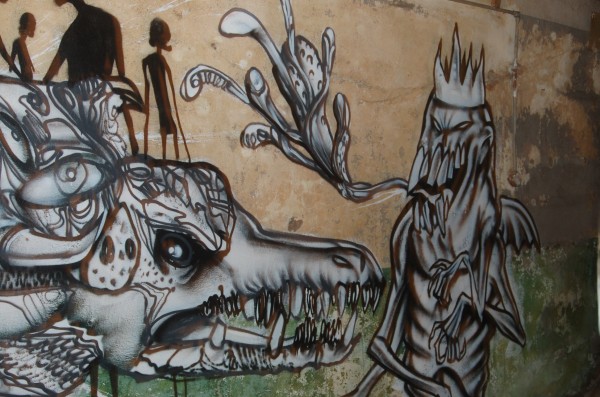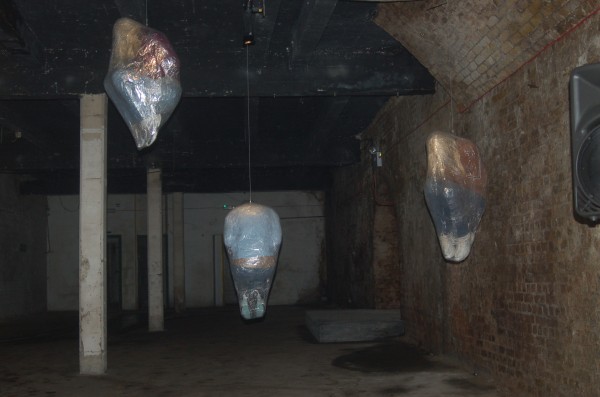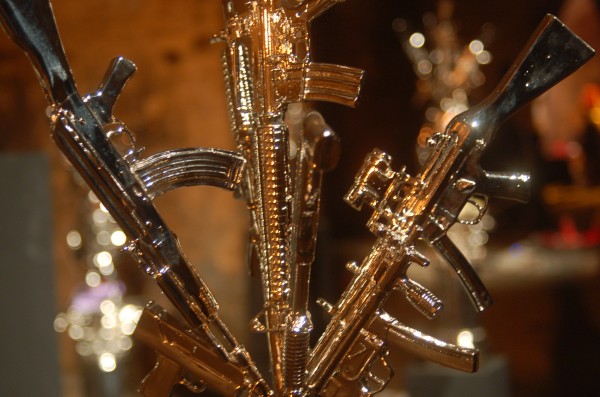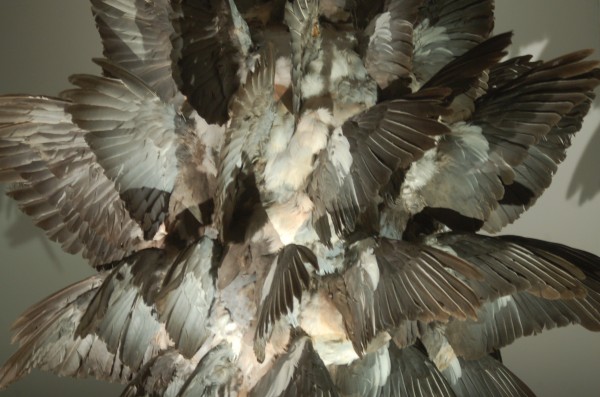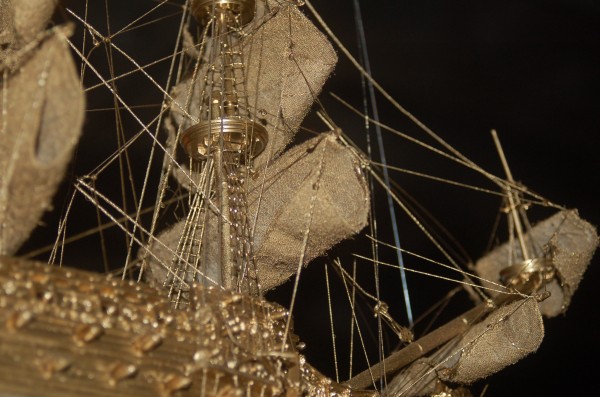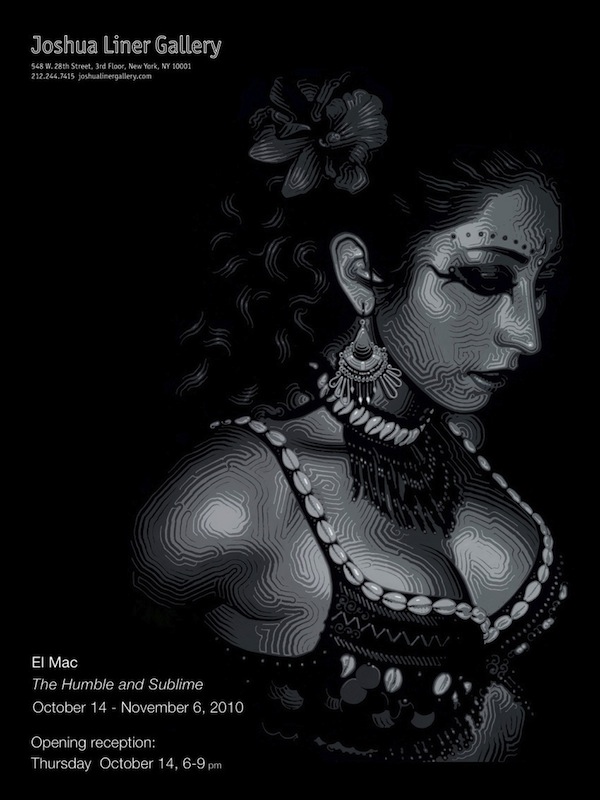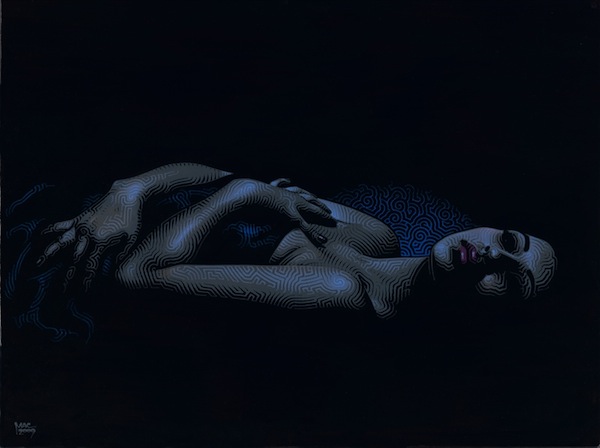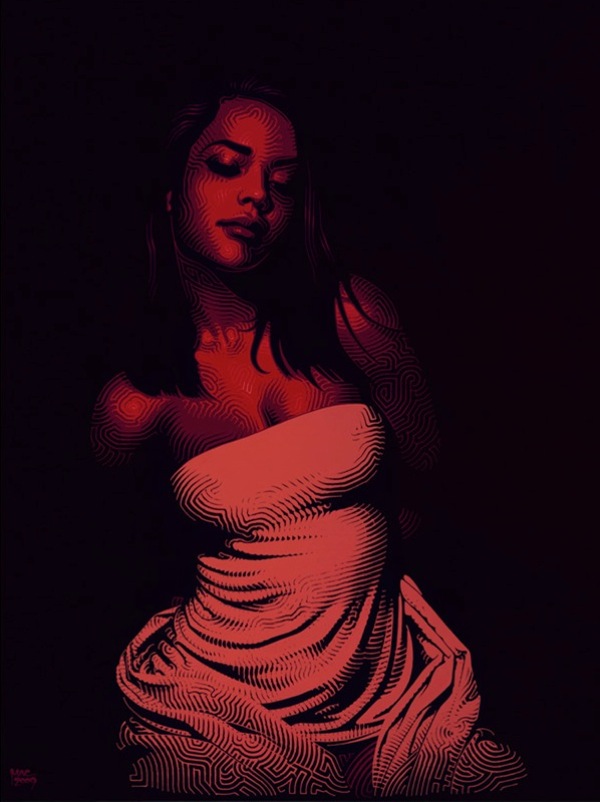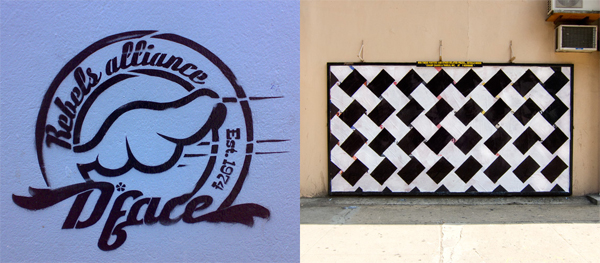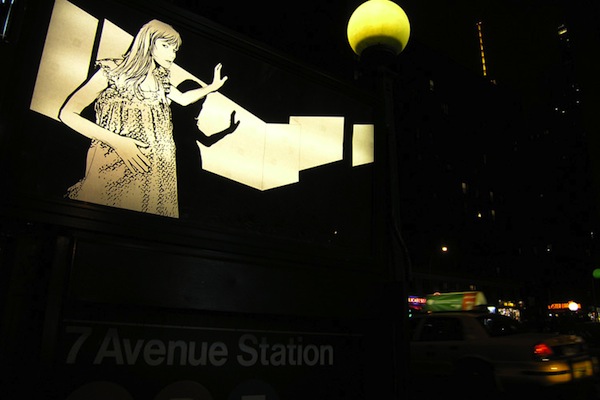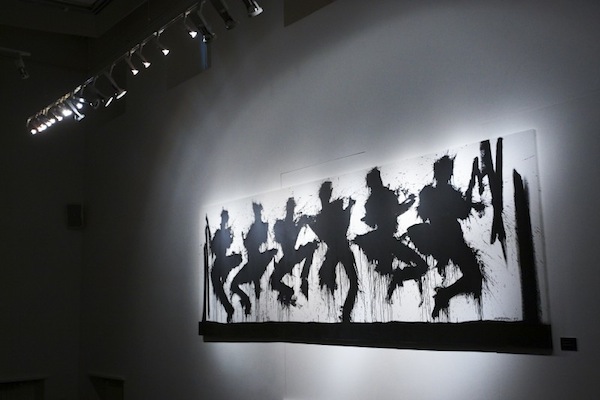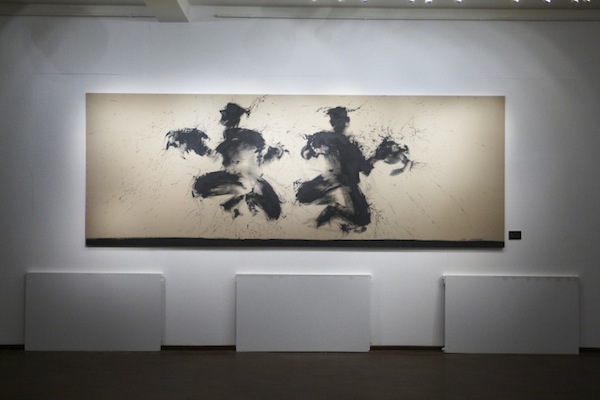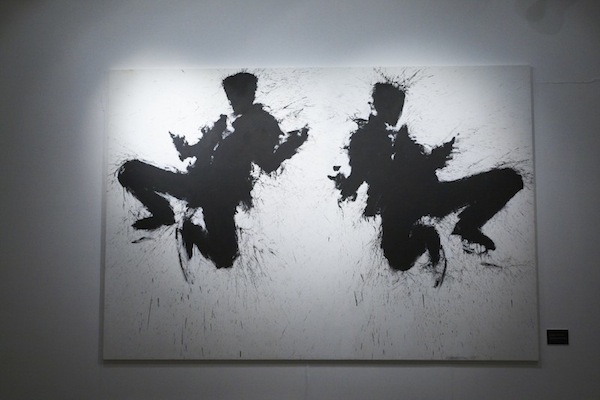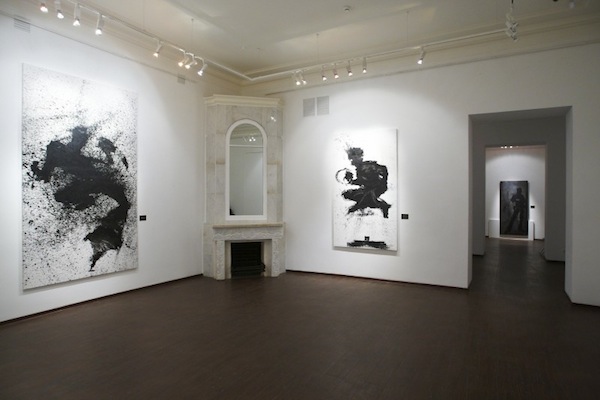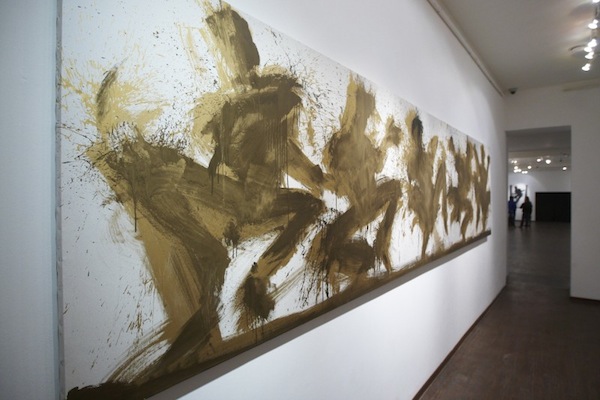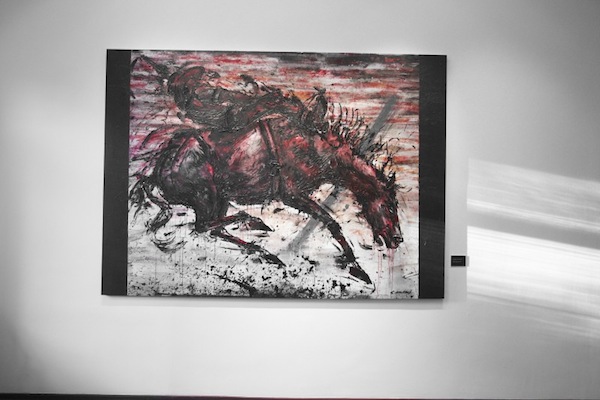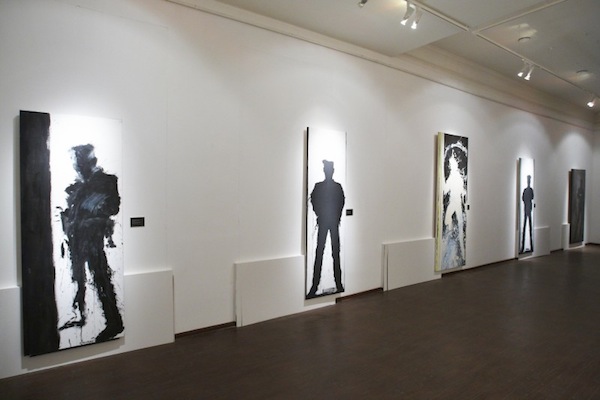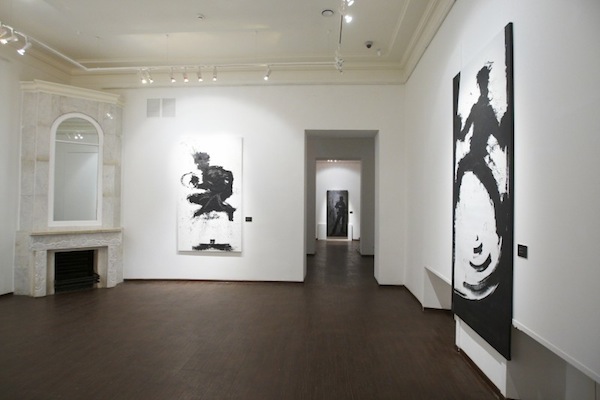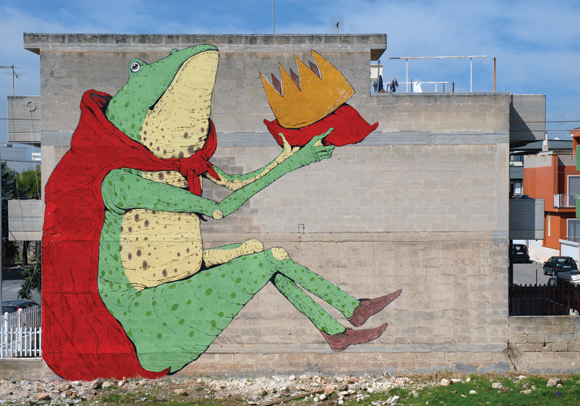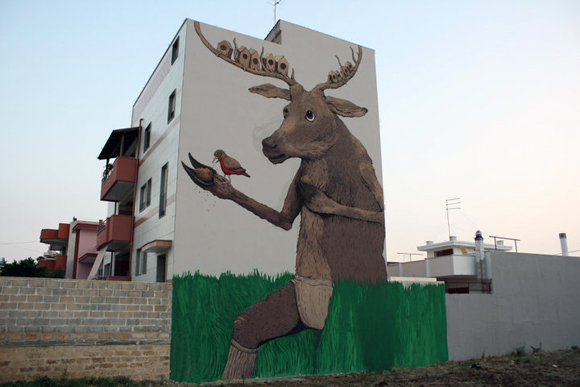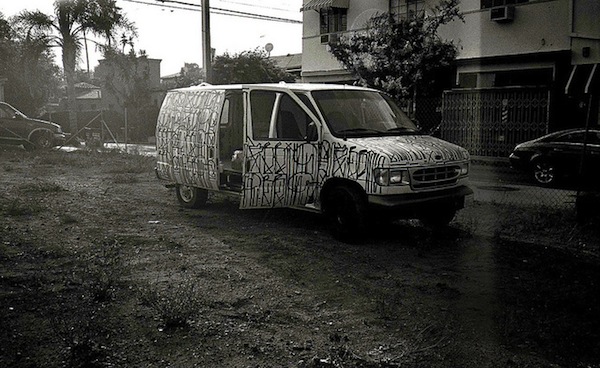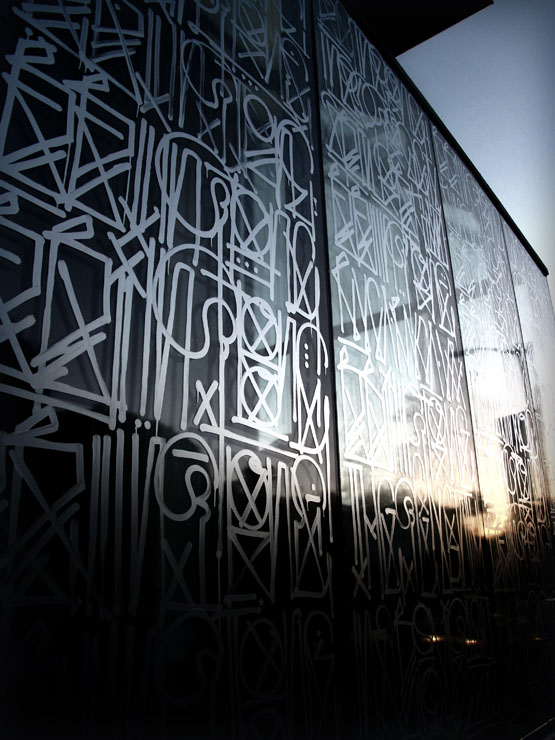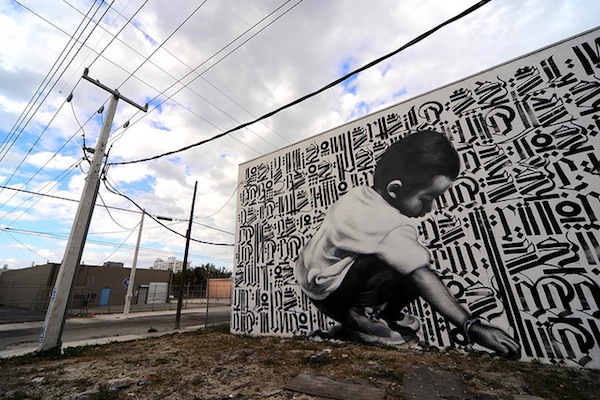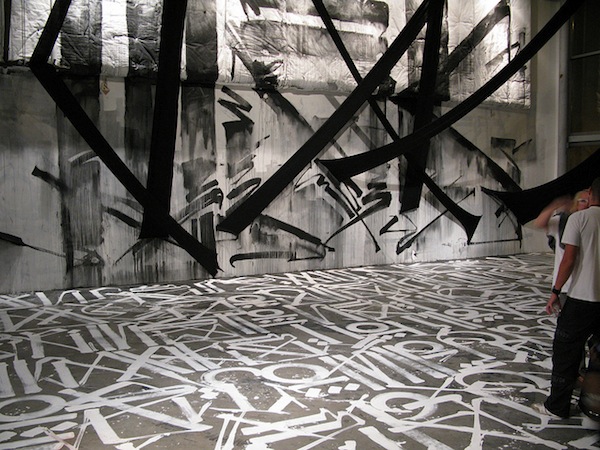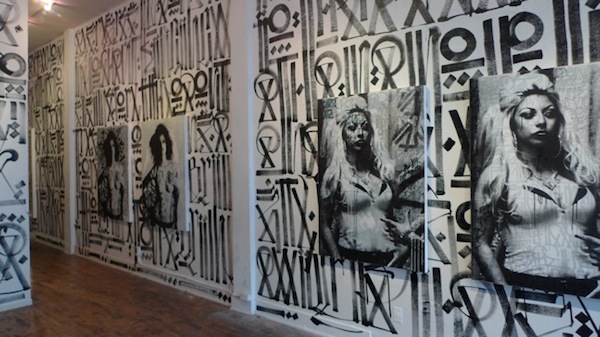
A couple of years ago, I mentioned to one of my high school teachers that I liked street art. She got really excited. Turns out, she a. a huge tattoo by Mike Giant on her back and b. once interviewed South African street artist Faith47. At the time, I’d either not seen or not taken much notice of Faith47’s artwork, but that quickly changed. Now, Faith47 is one of the artists that I think of when I think of street art. There are a lot of talented street artists, but Faith47 really gets what street art is about: Faith47 can take an old wall and give it new life, and she helps to raise awareness of serious social issues at the same time. While they are stylistically very different, I see a similar intent behind Faith47’s art as I see with Swoon. Before this interview, I’d only been in touch with Faith47 once or twice before. Now, all my suspicions about her being as amazing and genuine a person as she is an artist seem to have been confirmed.
But it’s not coincidence that Vandalog is doing an interview with Faith47 now. Next week, Faith47 will be taking part in Moniker, the London art fair for street artists. Faith47 will have some art in Campbarbossa‘s booth at the fair. Moniker opens next Thursday evening. Most of Vandalog will be there; it’s definitely something worth seeing (hell, I’m traveling all the way from Philadelphia). So that’s my reminder about Moniker, here’s the interview with Faith47:
RJ: How did you start painting walls? Do you do graffiti, street art, a bit of both, something else or does it even matter what we call it?
Faith47: Wealz130 from the YMB crew was my catalyst in the formation of this love affair with graffiti, he taught me the do’s and don’ts and has been my adviser ever since.
I understand and appreciate graffiti culture immensely…
One of the things I liked most about graffiti was its anti social nature and its ability to exist outside of society…
And with this in mind I didn’t want to feel stuck within the mode of graffiti thinking where I am not free to experiment and do exactly what I want to do.
So you could label the different things I do into different categories, but at the end of the day it’s all just labels.
I paint the streets, and in a gallery space, I basically just do the work that I want to do and don’t worry so much about any of this, ‘what do we define this as?’ thinking… as life is bigger and more complex and intricate then that…

Where is your favorite place to paint?
My studio… at nighttime… with deep dark music on…
Or in the inner city littered streets, on a broken abandoned building which is still echoing of times past…

Most of your photos of your work outdoors show the wider context of where the work was painted, and many of those photos show members of the public passing by the art. Why do you paint where you do, and how do people react to it? It’s one thing for sites like Vandalog or Wooster Collective to post a photo and say “wow that’s cool,” but I’m not sure that’s your intended audience…
I’ve always loved the actual process of painting on the streets. It’s the experience itself that is half the beauty of it.
In South Africa people rarely explore life outside of their particular class category. This is partially due to the legacy of the apartheid group areas act.
So, to move around the country and in and out of the various communities through my painting has opened up this life to me in ways that I don’t think I could ever actually explain in words… This spills over to traveling in other cities and countries, the way you experience the city changes 100% when you are painting its streets… I’ve managed to experience the world and its alleyways and stolen lost roads with sheer excitement and wonder for the last few years, and for this I feel truly blessed.
I much prefer to paint in gritty, neglected areas and countries… Where one can see the life stories of the people ached into their faces…
The hand painted shop signs, the chaos of the streets, the freedom in this chaos to find your own space and work within it, to become part of the environment in this way… It’s organic and breathing and I like to feel that silent screaming breath of the city.

How does your art change between working on walls or “gallery art?”
I fell in love with painting on wood and I think this will be an endless exploration into how I can play with this medium, it is so natural and such a base element. It takes me closer to nature. I’ve been exploring thoughts that are intensely personal; it’s been good for me.
I think it’s freeing me up a lot, allowing me to work in ways that are also in turn affecting my street painting.
So the relationship is symbiotic.
Also I can’t do one of them too much with out getting tired, so it’s nice to change from street to the studio from time to time, keeps things sharper…

What are you goals as an artist?
I really want to get to the point where I can comfortably support my son and myself without doing any work or commissions that I don’t want to do.
I really want to be able to use all my time to explore whatever ideas I have in my mind.
My biggest challenge in this life has been the financial pressures that interrupt my artistic process… It’s gotten a lot better, but it’s been such a long process and taken up a lot of extra time. I think this is a challenge for many artists… Especially in countries where there are no support structures or where you’ve had no formal art training etc.

This issue may have completely blown over by now, but I remember something like a year and a half ago that you tried to get the word out about an absurd anti-graffiti law that was being proposed in Cape Town. Were you successful in preventing that law from being passed?
It was passed a month ago.
I am feeling very depressed about it. It’s a blanket law that totally alienates us. I feel completely deflated about this. There is no option but to carry on as per usual and hope for the best. I want to move away from this city because of this negative energy from the city, but my son is here and he is very close with his father and we have a strong extended family structure. So I have to wait it out until he is at least 18…
Cape Town is a beautiful city, but it has a sickness that can affect you if you are not vigilant about it.
This is why I love / need to travel, to make sure I am breathing and thinking and alive and not subscribing to the bullshit that one subscribes to when you are in a small town for too long. A few days ago my unsuspecting heart sunk into the ground when I saw that they had buffed over the old “free Mandela” slogan which is on the off ramp near the Pick and Pay in Observatory… I’ve driven past that for years, we used to joke about stealing that iconic vibracrete and selling it to a museum – it’s so precious of course where it is that we would never had done such a thing, but our city council doesn’t care about these things and with grey bland death cement paint they erased a symbol of the painful struggle, perhaps because they knew that it never really ended and that the tires are still burning.

You’re probably the only well-known street artist that I can think of who is also a mom. How does being a mother influence your art?
Well it’s been super challenging, especially in the beginning.
But his dad and the family play a big part.
I’ve always thought that the best way to teach is through example, so when I had him, I was really young, and everyone expected me to get some lame ass job and do ‘what needed to be done,’ but I thought, “no, if I want him to do with his life something that he loves, then I need to do the same…”
I’ve been pretty uncompromising about this and it’s working out now after all this persistence.
He hangs out at his dad’s tattoo studio or at my studio a lot so he is always around great artists and people.
We’re really lucky, he loves drawing and in fact he burns a lot of artists hands down…
From the start we incorporated him into our lifestyles, so as he’s gotten older hes become an amazing friend and it’s actually a pretty easy dynamic.

How will you be involved in the Moniker Art Fair?
Well I’m going to be showing and painting at the Stroke.03 fair in Berlin.
So I thought I would hop over to see Moniker. I’ll paint a wall somewhere I think, and I’ll have some work up with campbarbossa.
But really I just wanted to hang out with Frankie a bit who is organizing the fair, and meet some of the galleries who are involved.

What have you got planned for the future?
I’m going to fall in love.
Again.
Photos courtesy of Faith47
